1. Image Recognition for Artifacts
Artificial intelligence is enabling rapid identification of cultural artifacts from photographs. Deep learning models trained on large image datasets can recognize distinctive shapes, patterns, and surface details even in partial or damaged artifacts. This accelerates sorting through excavation photos or museum archives, allowing researchers to pinpoint objects of interest without waiting for a specialist. AI image recognition thus complements human expertise by providing instant preliminary classifications and authenticity checks, helping confirm an artifact’s likely origin or identity. It significantly streamlines workflows that traditionally required laborious manual comparison against reference collections.
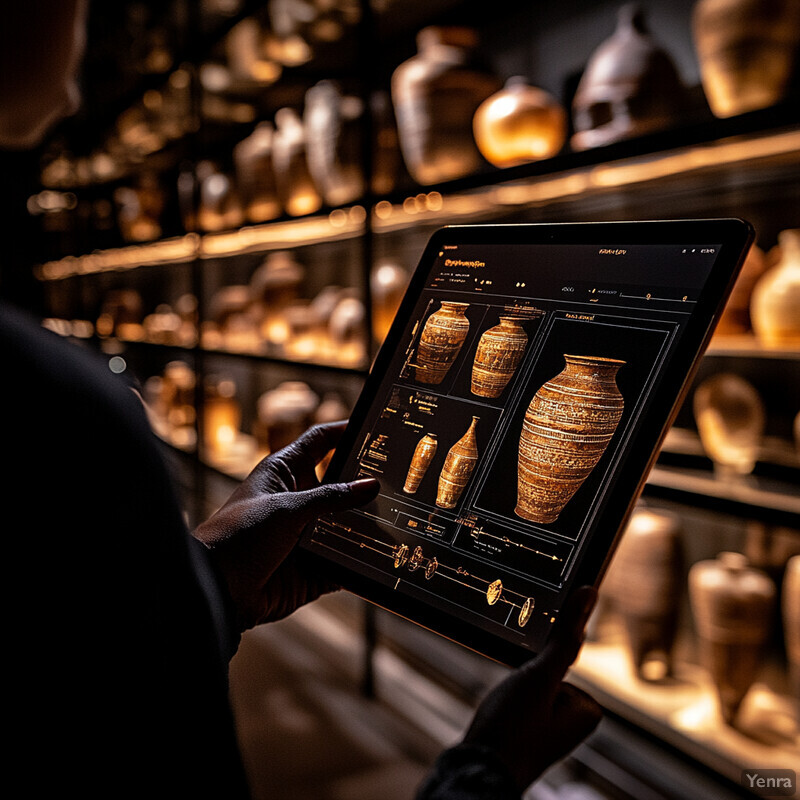
AI-driven image recognition platforms are proving effective in real-world heritage scenarios. For example, the EU-funded SIGNIFICANCE project developed a deep-learning system to identify trafficked cultural artifacts in online images. In tests, the platform boosted detection of illicit artifacts by an estimated 10–15% through automated image scraping and classification. The SIGNIFICANCE system uses a convolutional neural network (VGG16) trained on known artifact classes (coins, frescoes, manuscripts, etc.), enabling authorities to recognize and track objects across social media and dark-web listings. Such results highlight how trained CNN models can swiftly spot and categorize artifact images with accuracy, aiding scholars, law enforcement, and curators in identifying items that might otherwise go unnoticed or unverified.
2. Style and Motif Analysis
AI is now capable of discerning subtle artistic styles and recurring motifs that tie artifacts to particular cultures or workshops. By learning visual patterns – like specific ornamentation on pottery, textile designs, or carving styles – machine vision can assist experts in attributing unknown pieces to their likely origin. These models detect consistencies in symbols or stylistic flourishes that may be too subtle or numerous for a human to manually catalog. In practice, this means an algorithm can suggest that an unfamiliar artifact’s decorative elements match those of a known regional style or era. The technology effectively augments comparative art analysis, helping narrow an object’s cultural lineage or chronological placement based on pattern recognition.
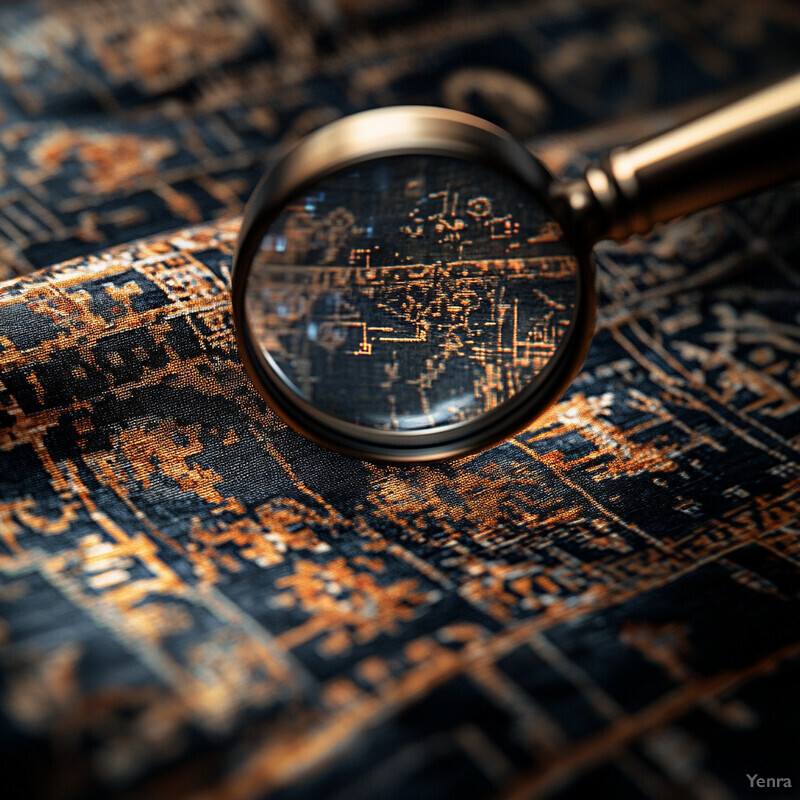
Recent research demonstrates AI’s ability to recognize and classify ancient artistic motifs with high accuracy. In one study, archaeologists applied machine learning to rock art photographs from Australia’s Kakadu National Park to automatically detect painted figures and patterns. The AI system identified rock art drawings with about 89% accuracy, vastly speeding up analysis of hundreds of site images. Moreover, the trained model can eventually go beyond mere detection: experts report that such systems should be able to classify imagery by motif type and find relationships among recurring symbols. This was evidenced when the AI highlighted distinctive shapes in the Kakadu paintings that helped researchers catalog them by style and possible cultural significance. These results underscore that AI can successfully learn the “visual language” of artifact decoration – from ancient rock paintings to tapestry motifs – and assist historians in attributing artwork to the right cultural context.
3. Material Composition Analysis Using Spectral Data
AI techniques are enhancing the analysis of an artifact’s material makeup through advanced imaging. Machine learning models can interpret multispectral or hyperspectral data – which captures information beyond visible light – to identify the chemical composition of pigments, inks, minerals, or metals in cultural objects. By learning the spectral “signatures” of various materials, AI can non-destructively determine what an artifact is made of and even estimate mixtures (e.g. pigment ratios in paint). This leads to more accurate insights into provenance and manufacturing techniques. For instance, an algorithm might analyze a painting’s spectral scan and conclude which pigments (ultramarine vs. indigo) are present, or examine a ceramic’s spectra to detect specific clay minerals, all far faster than traditional lab tests.
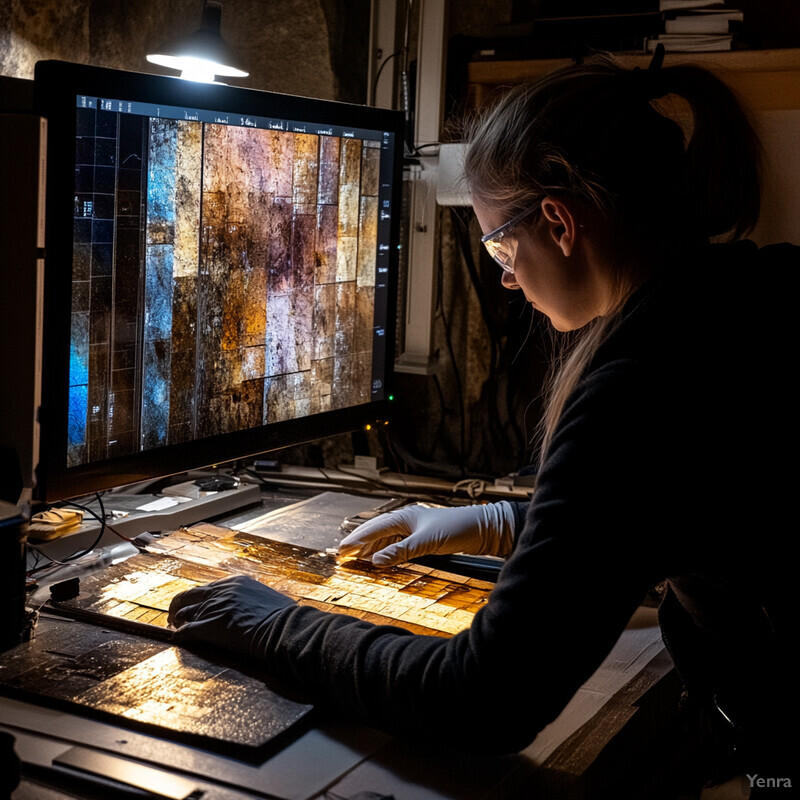
Research in cultural heritage science shows that combining spectral imaging with machine learning yields detailed material identifications. A recent 2024 review outlined a workflow using visible-range spectral imaging and AI to identify pigments on colored relics. The automated process involves segmenting an artifact’s spectral image, then using trained models to recognize the chemical composition of each segment. Such AI-driven analysis can even predict the proportions of mixed pigments from the spectral data. In practical terms, this means a system can scan an old painting and immediately label regions by pigment (e.g. vermilion vs. red ochre) or scan a ceramic and detect trace minerals indicating a specific clay source. By leveraging extensive spectral libraries, the AI achieves high precision in material classification, helping conservators authenticate artifacts and guiding restoration with scientifically grounded information about original materials.
4. Automated Dating and Chronology Estimates
AI algorithms are assisting in estimating the age of artifacts by correlating their features with known historical timelines. These models ingest large datasets of objects with established dates and learn subtle temporal patterns – such as evolving artistic styles, tool marks, or material changes over time. Then, when presented with a newly found artifact, the AI can suggest a probable creation period (e.g., mid-3rd century BCE) based on those learned patterns. Such automated dating can serve as an initial chronological assessment, especially useful when traditional dating methods (like radiocarbon) are unfeasible. Over time, as these systems incorporate more archaeological data, their chronological predictions become increasingly refined, providing scholars with quick time-frame estimates to guide further analysis.
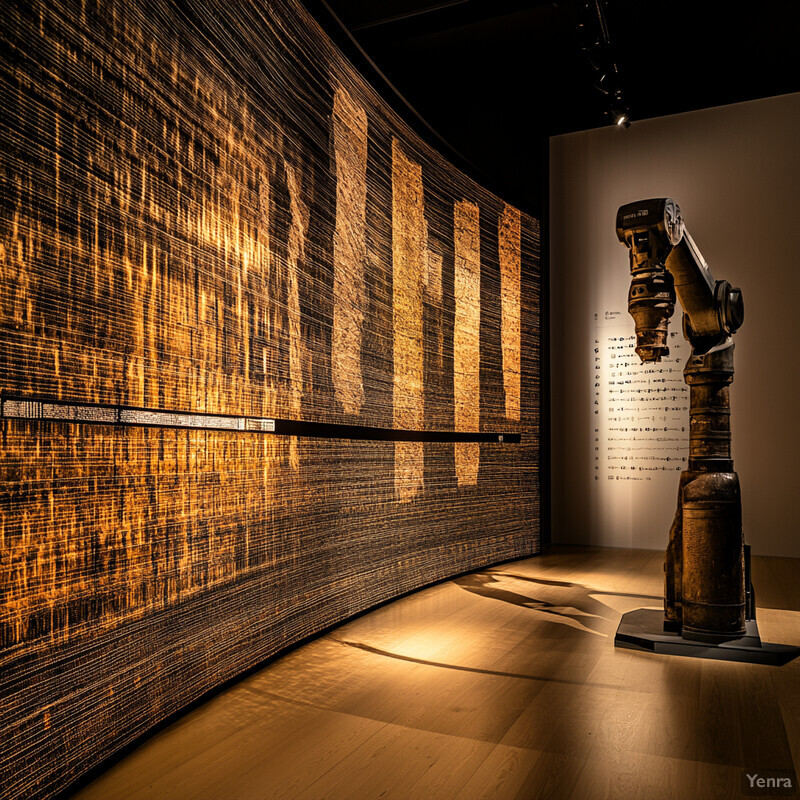
Cutting-edge AI models have demonstrated noteworthy accuracy in dating ancient objects. A prominent example is DeepMind’s “Ithaca” system, which was trained on thousands of Greek inscriptions and learned to predict both their provenance and date. In tests, the AI dated inscriptions to within about 30 years of scholars’ accepted dates on average. It also correctly identified the inscriptions’ geographic origins with around 71% accuracy. These results, published in early 2025, show that AI can effectively capture chronological signals in artifact data. By analyzing letter styles and linguistic patterns, Ithaca was able to suggest when and where a text was carved – a task that typically demands expert epigraphists. Such tools illustrate AI’s potential to rapidly narrow down an artifact’s era, providing historians with data-driven chronological estimates that complement traditional dating methods.
5. Translating Epigraphic Inscriptions
AI is revolutionizing the deciphering of ancient inscriptions by applying natural language processing to historic scripts. By training on transliterated texts and their translations, models can learn to recognize patterns in ancient writing (like cuneiform, hieroglyphs, or classical alphabets) and generate plausible translations into modern languages. This is especially helpful for inscriptions in extinct languages or scripts where human expertise is scarce. AI translation tools can work much faster than manual efforts – instantly suggesting meaning for phrases on tablets, statues, or plaques. While not perfect, they provide scholars with a valuable starting point or a draft translation that can be refined. Over time, as more inscribed texts are digitized and fed into these models, their vocabulary and contextual understanding grow, steadily improving their ability to unlock the content of epigraphic records.
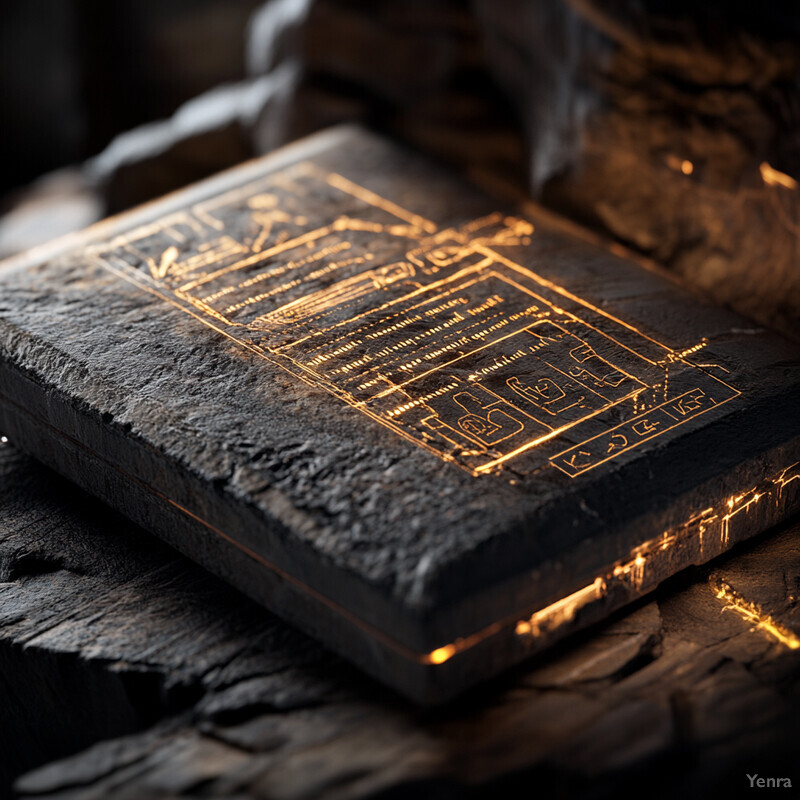
A breakthrough in 2023 demonstrated AI’s prowess in translating ancient Mesopotamian texts. Researchers developed a neural machine translation system for Akkadian cuneiform tablets – a 5,000-year-old script – and reported high accuracy on formal texts. The model was trained on large bilingual corpora of Akkadian (in transliteration) and English, and it achieved notable quality in rendering royal decrees and omen texts into English. According to the team’s report in PNAS Nexus, the AI could handle the structured language of those texts with minimal errors, though it struggled more with literary or informal letters. Furthermore, the system benefited from modern AI data augmentation: by incorporating thousands of synthetically generated training sentences, it boosted translation performance (measured by BLEU scores) for Akkadian by significant margins. These results – the first of their kind for a low-resource ancient language – show that AI can indeed decipher and translate epigraphic content, effectively acting as a digital “Rosetta Stone” for languages long unspoken.
6. Mapping Geographic Origins
AI tools are helping pinpoint where artifacts likely come from by comparing their features to vast geospatial databases of cultural material. These systems can learn the characteristic signatures of artifacts from different regions – for instance, chemical compositions of clay linking pottery to a certain valley, or stylistic motifs tied to a particular workshop. When presented with a new object, the AI assesses which known region’s profile it matches most closely. This “geographic fingerprinting” can suggest an artifact’s origin even if it was found far from its production site (due to trade or migration). By aggregating data from archaeology, chemistry, and art history, AI-driven provenance mapping provides a data-driven way to chart ancient trade routes and cultural diffusion, offering hypotheses about where an object was made or circulated.

A 2023 study demonstrated how supervised machine learning can classify archaeological objects by their region of origin using elemental data. Researchers analyzed the chemical composition of ceramic sherds (36 ancient pottery fragments with known provenances) and trained several algorithms to classify each piece’s source region. The machine learning models, using minor and trace element concentrations as input, were able to reliably distinguish which fragments came from which production area. The results, published in Journal of Archaeological Science: Reports, showed that the ML classifiers could match the archaeologists’ prior classifications, effectively grouping ceramics by the clay source and kiln site. This validated that AI can exploit geochemical signatures to map artifacts to geographic origins. Such techniques mean that, for example, if an unprovenanced pot shares a rare elemental profile with pots from a particular ancient kiln, the algorithm will flag that provenance – a powerful tool for archaeologists tracing artifact origins across the landscape.
7. Clustering and Classification of Large Collections
AI aids museums and archives in managing enormous collections by automatically grouping similar objects and classifying them into categories. Using computer vision and unsupervised learning, AI can sift through thousands of unlabeled images or records and cluster items that share visual or contextual traits. For instance, it might group together all artifacts with similar shape and decoration, or classify a trove of mixed fragments into types (pottery, tools, jewelry) without prior labels. This capability is invaluable for institutions with backlog collections – it creates an initial order and highlights patterns in the data. Clustering also reveals unexpected connections between objects, potentially surfacing sets of items that belong together (parts of a set or style family) that curators hadn’t recognized. Essentially, AI acts as a tireless assistant curator, rapidly organizing collections and suggesting logical categories or relationships that humans can then validate and refine.
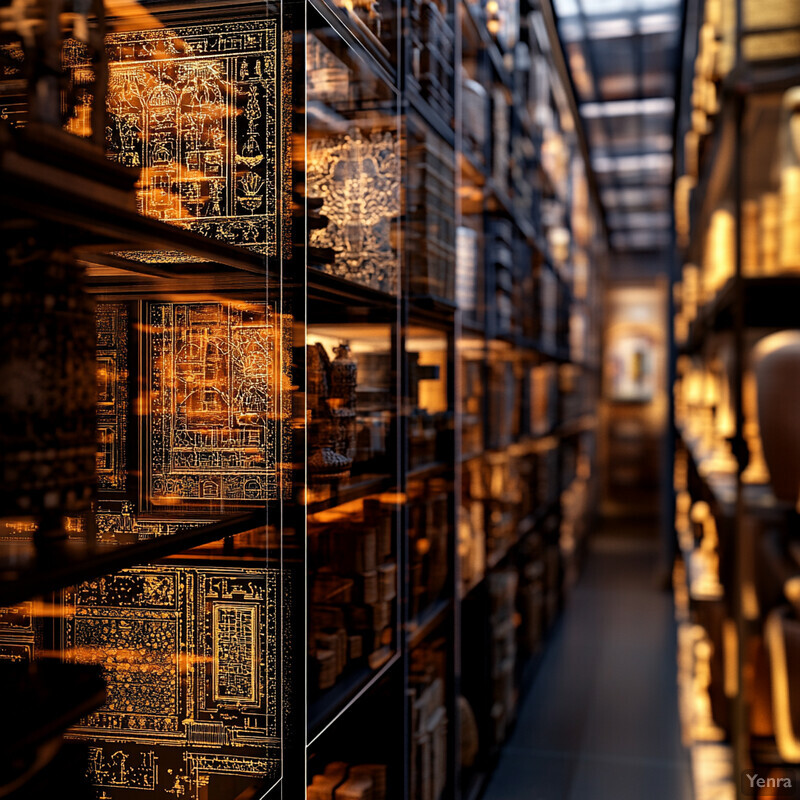
A recent initiative at the Rijksmuseum in Amsterdam showcases AI’s power to connect and classify vast collections. In late 2024 the museum launched an “art explorer” AI tool that combines data on its 800,000 artworks, 500,000 books, and archival documents into a unified search and discovery platform. This AI systematically makes connections across the collection – for example, linking a painting with related drawings, or grouping objects by theme or technique – tasks that were previously possible only through manual curatorial knowledge. The system leverages visual and metadata analysis to recommend similar pieces, effectively clustering works that share artistic or historical elements. According to museum officials, the tool excelled at finding cross-collection relationships, uncovering inter-object links “in ways never before possible” and thereby informing both researchers and the public of coherent groupings in the collection. By employing such AI-driven classification, the Rijksmuseum and others are able to mine their digitized holdings for patterns and sets, turning overwhelming archives into organized, searchable, and thematically rich groupings.
8. Provenance Research Assistance
AI systems are increasingly used to trace an artifact’s ownership and history by mining large text and image archives for relevant clues. Provenance research – tracking where an object has been, who owned it, and how it moved – often involves combing through old sale catalogs, museum inventories, and archival documents. Machine learning can automate much of this slog. For example, AI-powered text recognition can read decades of auction catalogues or letters and flag mentions of a particular artifact or its distinctive features. Similarly, image matching algorithms might spot the same artifact in an old exhibition photo or dealer catalog. By swiftly cross-referencing disparate data sources, AI can suggest possible provenance links (e.g., identifying that a sculpture in a 1920s auction catalogue is the same now in a museum, based on matching descriptions). This helps historians and curators assemble a more complete and accurate ownership history for artifacts, and can even reveal looted or stolen items by connecting them to records of illicit trade.

A notable 2025 project showed how AI could handle the tedious task of reading and transcribing annotations in antique auction catalogs – a goldmine for provenance data. Researchers targeted German art sale catalogues (1901–1945) that contained handwritten notes by auctioneers recording buyers, sellers, and prices. These marginalia are crucial for provenance but were not searchable until now. Using advanced handwriting recognition tools (like Transkribus and eScriptorium), the team’s AI successfully converted many of these scrawled annotations into text. The result is that names and transactions recorded in the margins of century-old ledgers can be digitally searched and linked to objects. For provenance scholars, this is transformative: the AI can, for instance, find all instances where “Buyer X” purchased something – potentially identifying an artifact’s entry into a notable collection. While some training of custom models was required for the old script, the study proved that machine learning can unlock archival provenance data at scale, laying groundwork for comprehensive object histories that were previously impractical to assemble by hand.
9. Damage and Restoration Analysis
AI is aiding conservators by automatically detecting damage in artifacts and guiding restoration decisions. High-resolution imaging combined with machine learning can reveal micro-cracks, paint flaking, erosion patterns, or missing fragments that might be hard to discern with the naked eye. By comparing an object’s current state to learned “healthy” patterns, algorithms can flag areas of deterioration early (e.g., the fine network of cracks in an oil painting’s varnish known as craquelure). AI can also quantify damage – mapping the extent of surface loss or structural weakness – which helps in planning restorations. Furthermore, predictive models can simulate how an artifact would look if restored, or predict how damage might progress under certain conditions. All this allows restorers to prioritize interventions, use appropriate materials, and monitor artifact health over time with greater precision, ultimately extending the life of cultural treasures.
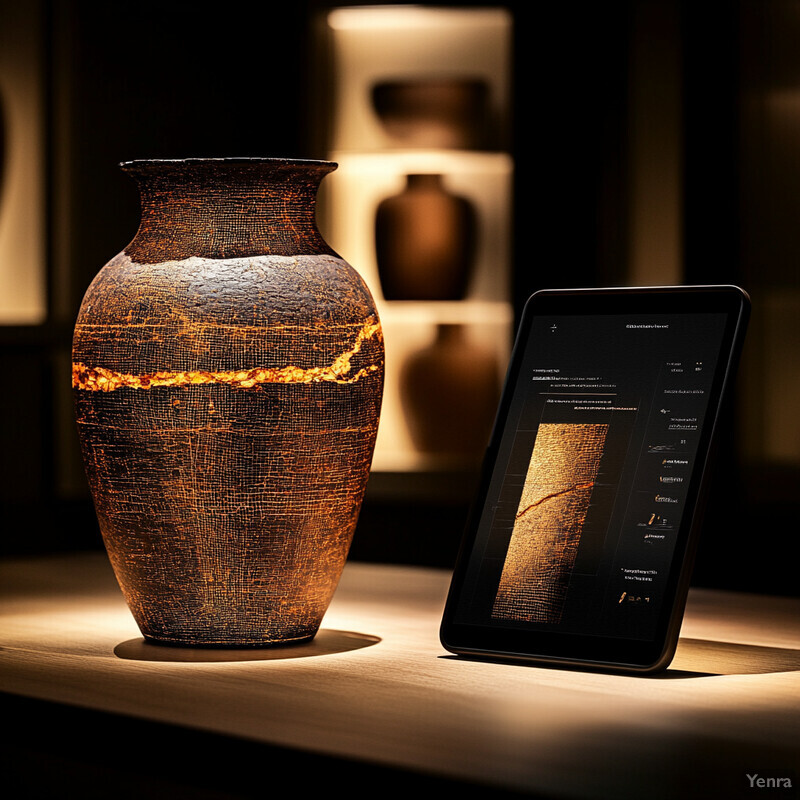
Innovative software has been developed to automate the detection of deterioration in artwork. One example is ARTDET, a machine-learning application introduced in late 2024 for analyzing paintings. Using a Mask R-CNN deep learning model, ARTDET can identify areas of paint loss (lacunae) and past repairs on high-resolution images of easel paintings. In validation tests on digitized paintings, the system achieved about 80.4% recall in detecting missing paint and filled-in stucco patches, with a 99% confidence level on the damage it did detect. Essentially, the AI “sees” where the original paint layer is gone or restored by scanning for telltale visual differences, then highlights those sections for conservators. This allows restoration experts to rapidly survey an entire painting and get a damage map that might have taken hours of close inspection to draw up manually. With tools like this, museums can more easily monitor the condition of collections and address issues like pigment deterioration or structural cracks before they worsen, guided by the AI’s consistent and detailed analysis.
10. Predictive Modeling of Lost Artifacts
AI is being used to predict the existence or discovery of yet-to-be-found artifacts by analyzing patterns in what has already been found. By examining the distribution of known artifacts across sites, types, and time periods, machine learning models can point out gaps or likely candidates for missing pieces. For example, if certain types of object are commonly found in sets, and one piece is absent, AI might flag that a “lost” piece probably exists and even suggest where it might be found (perhaps based on similar site contexts). Additionally, AI spatial analysis can identify unexplored locations that have a high probability of yielding artifacts, based on environmental and historical data. These predictive insights help archaeologists prioritize excavations and guide their hypotheses – essentially acting like a treasure map generated from big data. While not guaranteeing a discovery, such models significantly improve the odds of finding what would otherwise remain buried or overlooked.
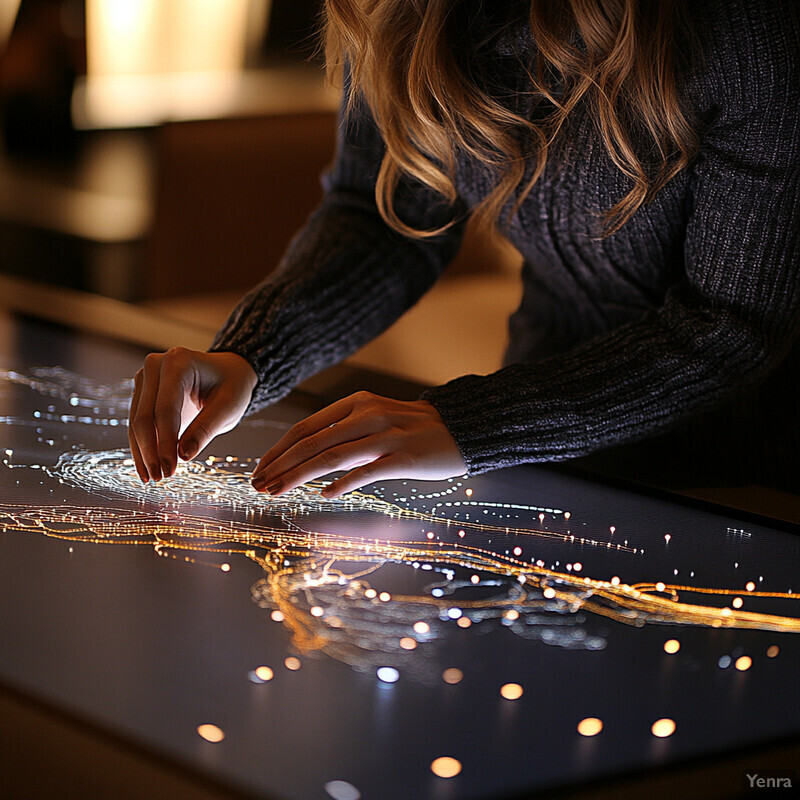
In 2023, researchers demonstrated a striking application of AI to predict buried archaeological sites in desert landscapes, effectively pointing to where unknown artifacts likely lie. A team in the UAE combined satellite remote sensing with machine learning to analyze the Saruq Al-Hadid region – a known Iron Age site – and its surroundings. The AI model processed radar and multispectral images to detect subsurface anomalies and learned the “signature” of areas already excavated. Impressively, it then predicted new, hitherto unexplored areas adjacent to the known site that likely contain archaeological remains. Subsequent field checks validated these AI-flagged zones, confirming traces of ancient human activity where none had been documented before. This study, published in Geosciences, illustrates how AI can fill in the gaps of the archaeological record: by recognizing patterns of past settlement in the data, it effectively suggested, “there should be artifacts here.” Such predictive modeling greatly enhances efficiency, helping archaeologists focus digs on promising locations and raising the chances of uncovering “lost” artifacts that traditional surveys might have missed.
11. Virtual Reconstruction of Fragmented Artifacts
AI-driven reconstruction techniques are allowing archaeologists to virtually “reassemble” artifacts that survive only in fragments. These systems treat artifact pieces like a complex jigsaw puzzle: computer vision algorithms analyze the shapes, edges, colors, and surface patterns of each fragment, and then propose how they might fit together. By doing this digitally, AI can try countless piece combinations far faster than a human, including rejoining fragments across different collections. This technology is applied to items like shattered pottery, broken sculptures, or fresco fragments – the AI can output a 3D (or 2D) model showing the artifact in a restored state. Such virtual reconstructions help researchers identify an artifact’s original form and missing parts, guiding physical restoration or simply improving understanding when a full rebuild is too difficult. AI-based reconstruction significantly reduces the manual trial-and-error that used to take conservators weeks or months, making it feasible to recover objects that were deemed too fragmentary to attempt.

A cutting-edge example is the EU’s RePAIR project, which combines AI and robotics to reconstruct ancient frescoes and other shattered artifacts from Pompeii. In 2023, RePAIR’s developers revealed an AI system that can analyze thousands of fresco shards and determine how they join, even employing robotic arms to handle and fit the pieces together in the real world. The AI’s software uses shape and pattern recognition to solve these puzzles: for instance, it can take scanned fragments of a Roman wall painting and compute the original image by finding matching edges and continuous painted motifs. In tests, the RePAIR robot successfully reassembled sections of a 2,000-year-old Pompeii fresco that had been blown apart by Vesuvius, accomplishing in hours what might have taken archaeologists years. Project leads reported that the goal is to “virtually eliminate” one of archaeology’s most frustrating tasks – manual fragment assembly – by letting AI reliably handle it. This dramatic proof-of-concept shows AI’s capacity to reconstruct our past: shattered artifacts can be digitally restored and even physically rebuilt, recovering cultural heritage that had seemed irretrievably lost.
12. Semantic Search in Databases
AI is enabling more intuitive ways to search museum and archive databases by meaning and description, rather than exact keywords. Traditional collection databases require knowing the right terms (e.g. “bronze axe”) to find something. Semantic search powered by AI changes this: users can type a natural-language query or even an abstract phrase, and the system will understand the context and retrieve relevant artifacts. For example, a query like “a painting of a man struggling to walk” could return a match in an art database even if those exact words never appear in the metadata – the AI has “looked” at images and knows which painting depicts that scenario. These systems often use vision-language models and embeddings: they analyze images and text to create a conceptual vector, so that similar concepts cluster together. The result is a more flexible and rich exploration of collections: researchers and the public can discover items based on themes, visuals, or stories (e.g. “medieval dragon motif”) without needing pre-defined tags. It bridges the gap between how humans think and how data is cataloged.
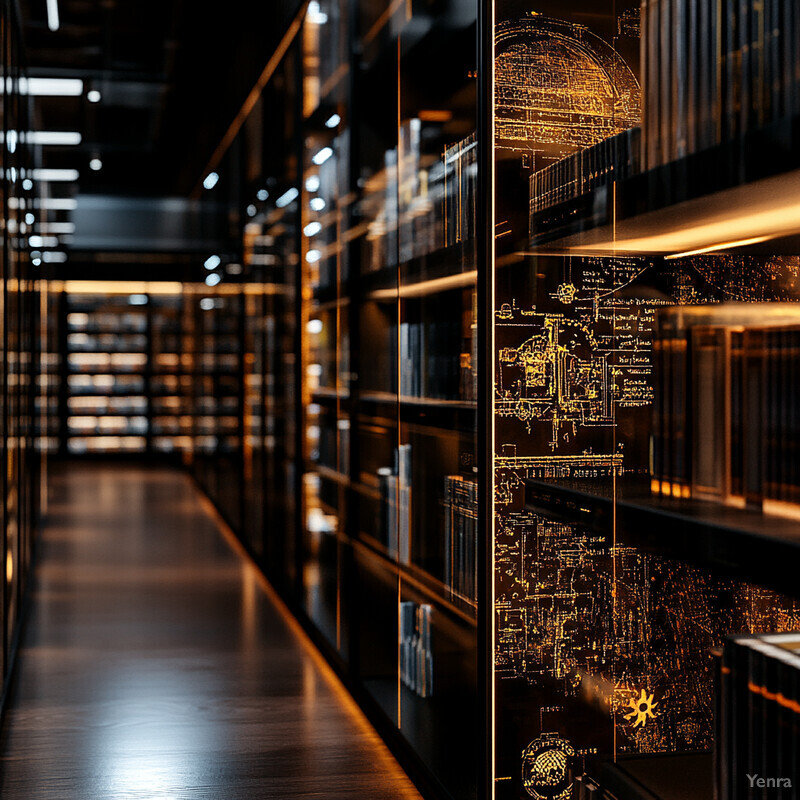
The National Museum of Norway has piloted a semantic search feature that exemplifies this capability. In 2023, their team used OpenAI’s GPT-4 Vision model to generate detailed descriptions for around 6,000 artworks in their online collection, capturing content like motifs, emotions, and themes present in each image. These AI-generated descriptions (far richer than the original metadata) were then converted into numeric embeddings and indexed for search using a vector database. The outcome is that a user can enter a query like “fear and companionship” or “a translucent material” and the system will return artworks that semantically match those concepts – even if the museum’s catalog never used those terms. This is possible because the AI “understands” the images: for instance, it might pick up on a painting that evokes fear, or a design object made of semi-transparent glass, based on its learned representation. The project has been successful in allowing cross-language and concept-based searches, demonstrating how AI can fundamentally enhance discovery in cultural databases by focusing on meaning rather than literal keywords.
13. Recommendation Systems for Curators
Similar to how e-commerce sites suggest products, AI recommendation systems in museums can suggest artifacts or exhibition items to curators based on patterns and preferences. By analyzing attributes of objects (period, style, subject, materials) and past curatorial selections, these algorithms can highlight related pieces that might complement a theme or deserve scholarly attention. For instance, if a curator is focusing on Baroque paintings from Italy, the AI might recommend a few lesser-known pieces from the same era or region that align stylistically or historically. Over time, the recommendation engine refines its suggestions by learning from curator feedback (which recommendations were used or ignored). This helps uncover hidden gems in collections and ensures important but overlooked artifacts get considered. It’s a tool for inspiration and thoroughness – ensuring curators can quickly gather a well-rounded set of objects for research or display, informed by the AI’s broad pattern-matching across the collection.

Major cultural institutions are beginning to deploy such AI recommendation systems. The European initiative on digital heritage innovation notes that AI-driven tools can personalize and enhance the selection of collection objects for exhibits. For example, the system might analyze a museum’s entire holdings and suggest to a curator, “If you are preparing an exhibit on Art Nouveau glassware, consider these five pieces with similar floral motifs and from the same era that are currently in storage.” In testing, prototypes have successfully recommended artworks and artifacts that fit curatorial queries, sometimes uncovering connections curators hadn’t realized. One early adopter, the Harvard Art Museums, leveraged machine-generated tags and descriptions (over 53 million of them) to enable a recommendation-like “AI explorer” for their 380,000 artworks. This allows users or staff to find related works (“Show me more like this”) and get automated suggestions of comparanda across mediums. As reported by museum technologists, these recommender systems continue to improve with feedback, and they hold great promise for dynamically generating object lists for exhibitions or research based on multi-criteria similarity – effectively giving curators a powerful AI assistant to ensure no relevant piece is overlooked.
14. Pattern Recognition in Decorative Elements
AI is adept at detecting recurring decorative patterns and iconography across different artifacts, which can reveal cultural connections. Often, specific motifs (like a lotus flower design, a particular knot pattern, or a clan symbol) appear on objects from the same culture or trade network. Machine vision can be trained to spot these motifs even when they vary in size or minor details. By scanning large image sets, AI might discover that a unique geometric border on a textile reappears on pottery from the same region – suggesting a shared aesthetic or workshop. This kind of pattern recognition helps attribute objects to the correct cultural group or artisan tradition. It also aids in understanding diffusion: if an unusual motif shows up far afield, AI can flag it, indicating possible cultural contact. Essentially, AI serves as a tireless pattern hunter, cataloging visual elements across collections and clustering items by the symbols and decorations they bear, thus enriching our understanding of stylistic lineages and influences.
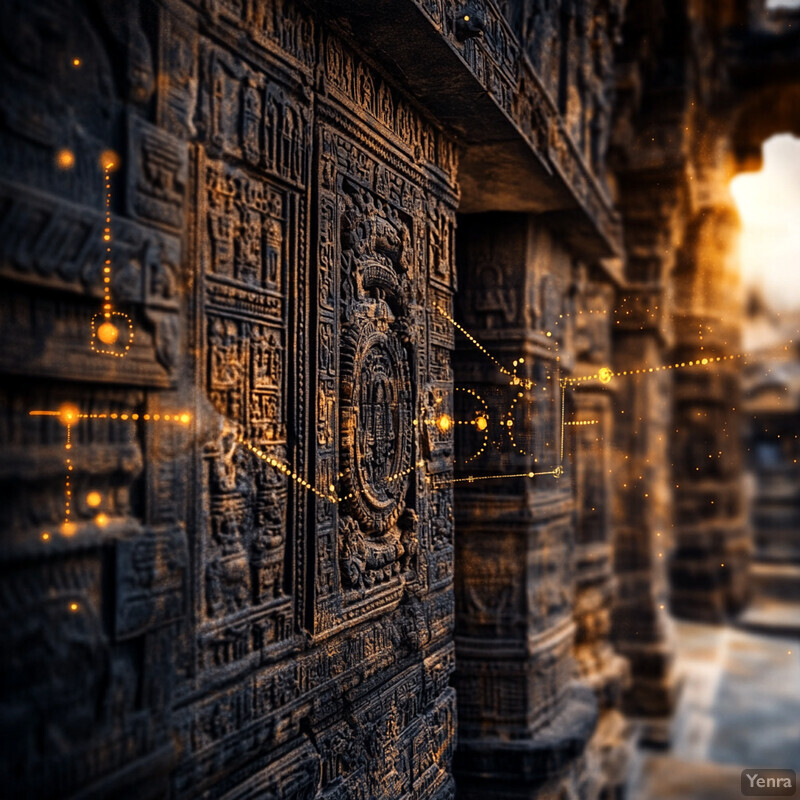
One concrete example is the application of deep learning to recognize traditional handloom fabric patterns. Researchers in 2024 developed a model to distinguish handwoven textile designs from machine-made ones by analyzing the weave motifs and textures. The AI achieved high accuracy in identifying the signature patterns of handloom fabrics produced by specific ethnic groups in India. In Scientific Reports, the authors noted the model could correctly classify samples of cloth by region of origin based on subtle motif differences woven into the fabric (for instance, discerning an Assamese handloom pattern from a Bengali one). The system even learned to ignore minor variations and focus on core pattern structures that define each tradition. These results highlight AI’s pattern-spotting ability: the model essentially “saw” the repetitive decorative elements in the textiles and used them as a fingerprint to identify provenance. Similarly, other studies have used CNNs to detect motifs on coins or carvings, reliably grouping artifacts by shared symbols. In each case, AI is uncovering the visual signatures that link artifacts together culturally.
15. Automated Metadata Generation for Digital Archives
AI significantly accelerates the creation of metadata (descriptive labels, tags, captions) for digitized artifacts. Instead of relying on staff to manually catalog each item, machine learning vision models can analyze an artifact’s image and suggest keywords (“ceramic bowl”, “blue glaze, floral pattern”) or even write brief descriptions. Similarly, AI can extract or infer contextual info – for example, recognizing text on an artifact and transcribing it, or identifying an object’s material. This automation is crucial as museums digitize millions of items; AI can generate consistent baseline metadata that makes these objects searchable. Curators can then verify and refine the AI-generated tags rather than starting from scratch. The result is richer, more accessible digital archives where even lesser-known items have detailed annotations. This improves discovery for researchers and the public, as they can find artifacts via attributes that were never cataloged by hand, and it does so at a scale and speed previously impossible.
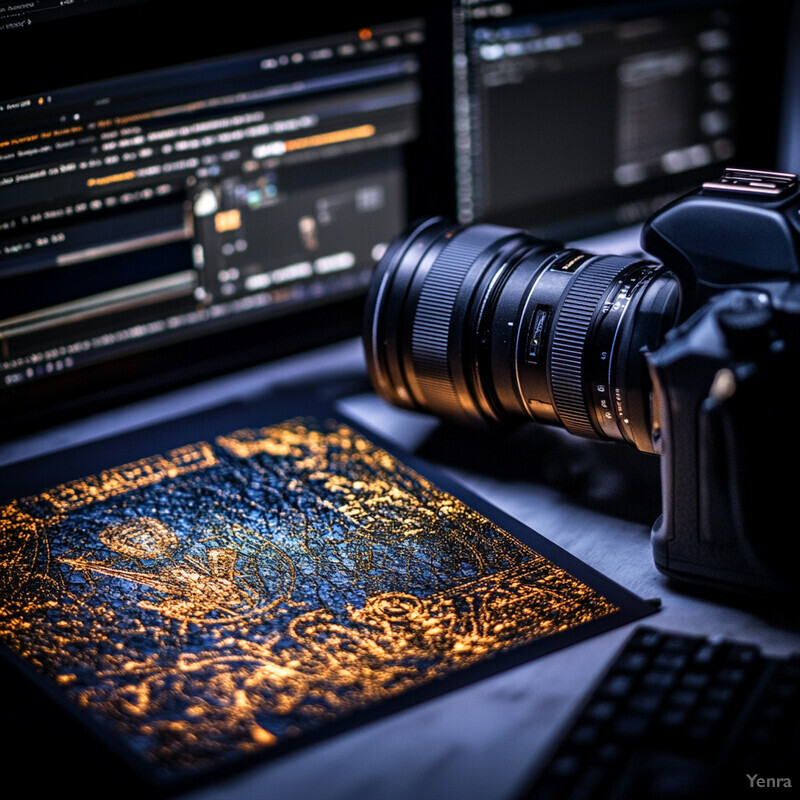
The Harvard Art Museums recently leveraged AI to dramatically expand metadata for their online collections. By 2024, they had used computer vision and NLP tools to produce over 53 million machine-generated tags and descriptions for approximately 380,000 images of artworks. These AI-generated annotations include object types, depicted content, colors, and other key features gleaned from the images, providing a dense layer of metadata that goes far beyond the sparse records originally in the database. This initiative, described by Harvard technologists, enabled advanced search functionality (users can search images by content or style keywords that were added by the AI) and helped highlight connections between pieces via shared attributes. Other institutions, like the Smithsonian, have similarly employed AI to tag and describe their digitized objects, markedly improving internal cataloging efficiency. The outcome is that vast collections became more discoverable and research-friendly: for example, one can now filter thousands of digitized artifacts by AI-assigned tags such as “religious iconography” or “contains text in Latin” without curators manually labeling each item. This demonstrates how AI-generated metadata is unlocking archives at scale.
16. Identification of Fakes and Forgeries
AI is becoming a powerful ally in detecting forged artifacts and artworks. By training on features of genuine pieces versus known fakes, machine learning models can learn the subtle differences that often elude the human eye – such as brushstroke patterns, material composition anomalies, or minute stylistic inconsistencies. These tools can analyze a suspect object and output a likelihood of it being authentic or fake. For instance, an AI might flag a painting as a forgery because its pigment spectral profile doesn’t match those available in the purported era, or because the micro-cracks (craquelure) pattern deviates from an authentic aging process. Similarly, AI can detect if inscriptions on an artifact show telltale signs of modern engraving techniques. By objectively quantifying these factors, AI adds a data-driven layer to authentication, helping museums, collectors, and law enforcement to uncover forgeries and protect cultural heritage from fraud.
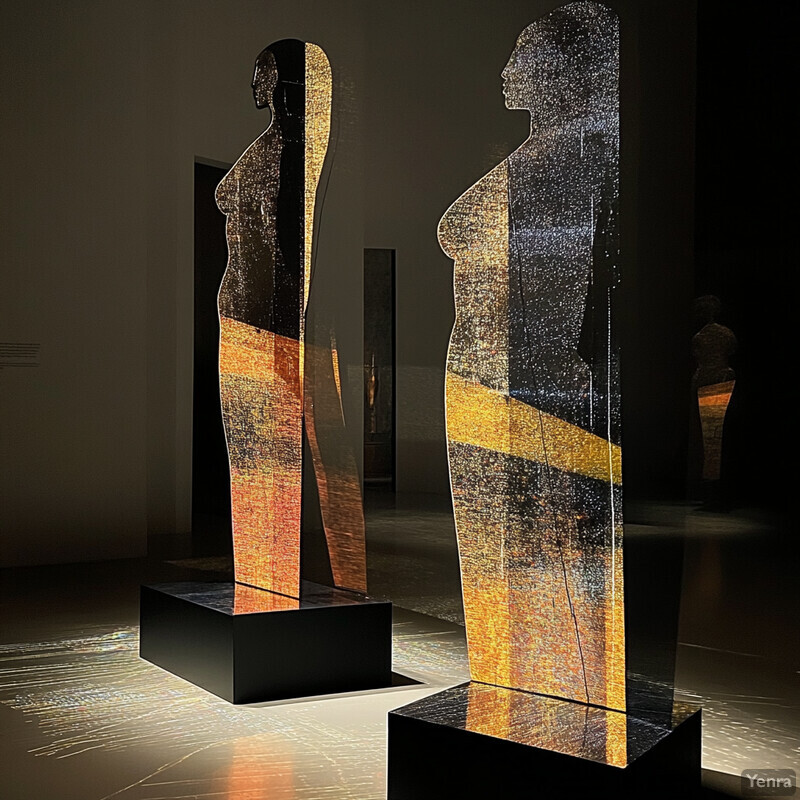
Early results are impressive: AI systems have achieved high accuracy in spotting art forgeries. In one case, University of Oregon scientists developed a neural network to distinguish Jackson Pollock’s drip paintings from imitations by analyzing their fractal paint patterns. The AI was able to identify authentic Pollocks with 98.9% accuracy, successfully separating them from fakes based on Pollock’s unique “poured” style. Another study published in 2024 showed that augmenting training data with AI-generated fake images improved detection of human-made forgeries of artists like van Gogh and Modigliani. The enhanced model could recognize authentic vs. forged artworks even with limited real examples by learning from synthetic “forgeries” it created, boosting overall detection performance. These advancements indicate that AI can catch subtle deviations – for example, a forger’s brushstrokes lack the multi-scale fractal complexity of a Pollock, or a forged canvas has microscopic patterns too uniform to be 19th-century. By rigorously testing suspected pieces against learned authentic patterns, AI brings a new level of scientific rigor to art and artifact authentication.
17. Cross-Disciplinary Correlations
AI systems are breaking silos between different fields of study by integrating diverse data sources to provide a holistic understanding of artifacts. Cultural objects can be studied not just in isolation but in context of anthropological data, linguistic records, environmental science, and more. For example, an AI might correlate an artifact’s material analysis with ancient trade routes (geography/economics), or link inscriptions on it to linguistic evolution (philology), or align its iconography with religious texts (theology). By ingesting knowledge graphs and databases from multiple disciplines, AI can surface connections – perhaps noting that a pottery style emerges in periods of certain climate shifts, or that a type of metalwork spreads along known migration paths. These cross-domain correlations help scholars build a richer narrative around an artifact: not only identifying what it is, but illustrating how it was influenced by and reflected the historical and cultural web in which it existed. It essentially mirrors the work of a team of experts from different specialties, finding patterns that span across human activity.
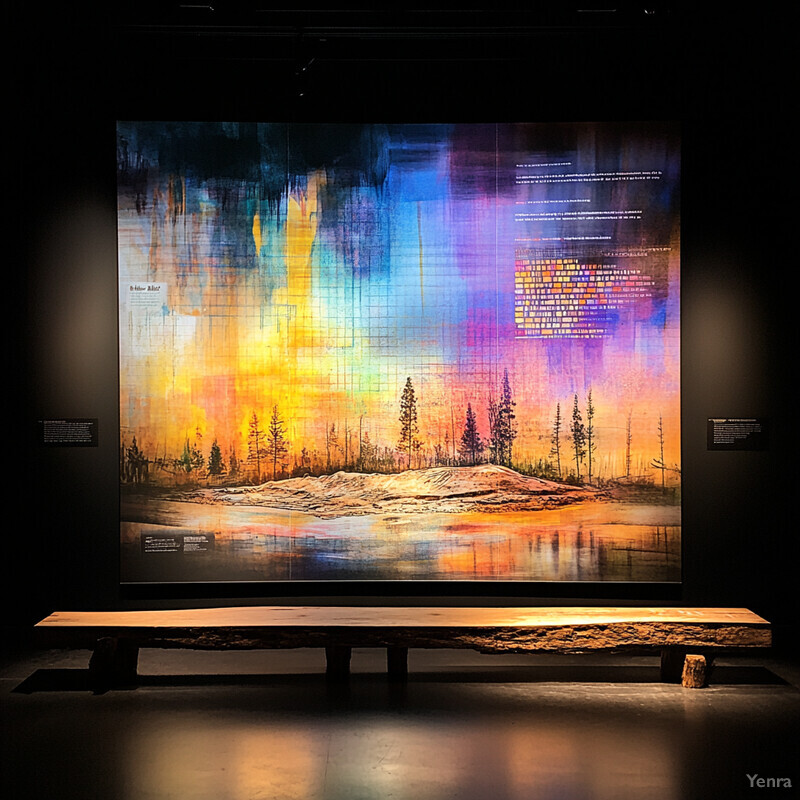
A pan-European research agenda in 2024 emphasized the importance of AI-driven integration of cross-disciplinary data for heritage interpretation. Projects under this initiative are using AI to link museum object data with everything from historical climate records to literary corpora. One example cited is the “Time Machine” project, which aims to map centuries of European history by connecting artifacts to archival documents, maps, genealogies, and environmental datasets via a massive knowledge graph. In practice, such a system could take an artifact – say a 16th-century Venetian painting – and pull in related information (contemporary trade records of pigments, letters mentioning the artist, even pollen analysis from the varnish linking to climate events). Early outcomes show AI can successfully manage these vast linked datasets, for instance automatically contextualizing a find: an algorithm might note that a type of bead unearthed in Africa correlates with trade winds and shipping logs of the 1100s, suggesting how it traveled. By weaving together threads from anthropology, archaeology, art history, and science, AI not only identifies an artifact but situates it within the tapestry of human history, offering interpretations that would be difficult for any single researcher to assemble alone.